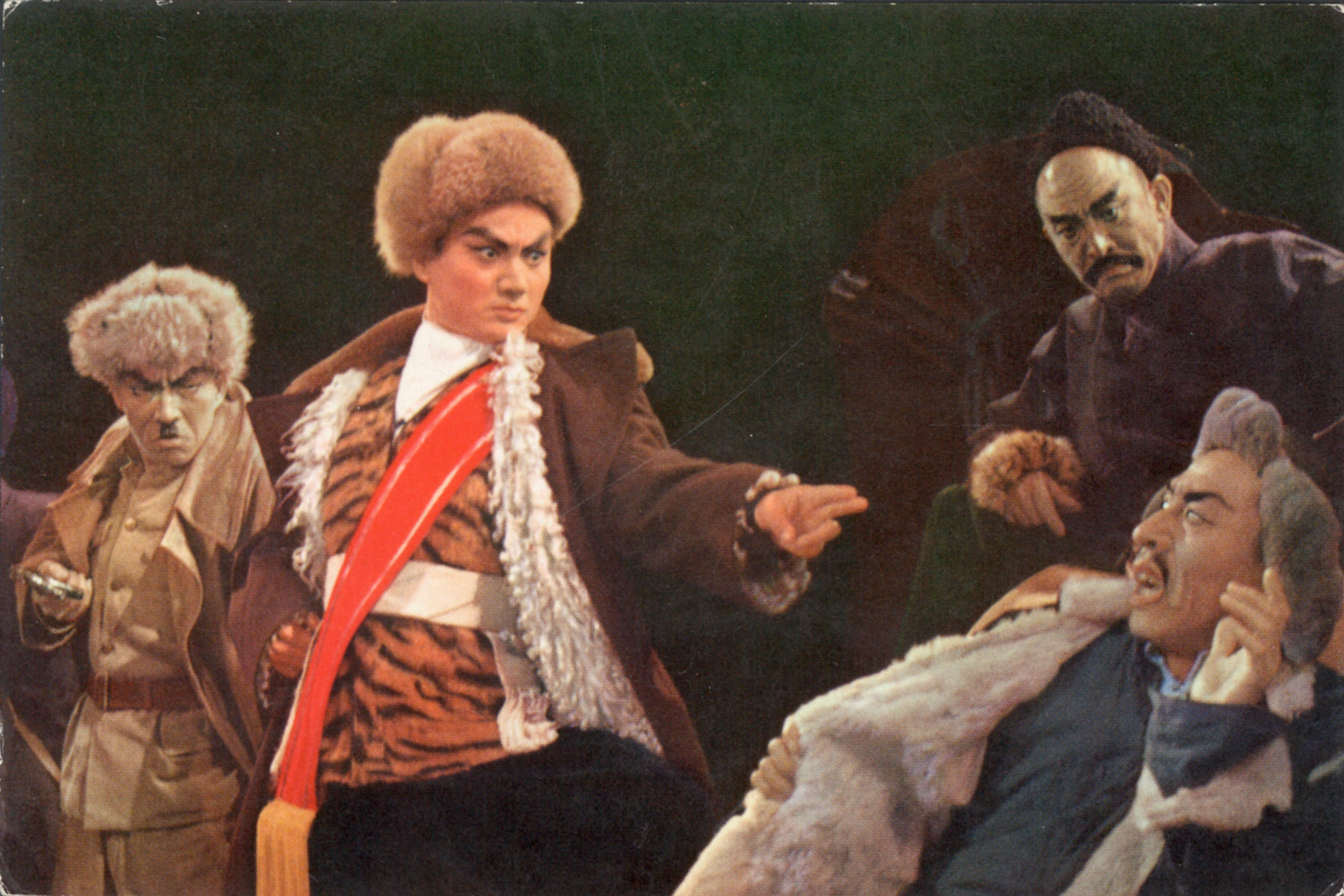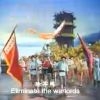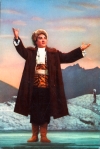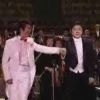Illustration:
ill. 1.5 c (set: 1.5)
Date:
1970
Genre:
postcard
Material:
scan, paper, colour; original source: postcard, colour
Source:
Postcard Collection: Beijing: Foreign Languages Press, 1970.
Keywords:
Zuo Shandiao, Vulture, Taking Tiger Mountain by Strategy, negative character, villain, visualisation, model work, model opera, yangbanxi, Cultural Revolution, propaganda art, gesture
Taking Tiger Mountain by Strategy: Zuo Shandiao and his men (Zhiqu weihushan: Zuo Shandiao 智取威虎山: 座山雕)

Not unlike the clown in traditional opera (chou)—a modern version of which appears in the form of the Korean in Raid on the White Tiger Regiment who keeps coming up with wrong rhymes (scene 6)—the negative characters in the model operas all appear slumped or hunched, with their faces down, and avoiding the audience (sometimes their awkward appearance is stressed by making them wear deliberately badly cut clothes, so, for example in the case of the American military officer in Raid on the White Tiger Regiment). Alternatively, they are filmed from below (e.g. Song of the Dragon River scene 4) or above (e.g. Raid on the White Tiger Regiment scene 2 or in Fighting on the Plain scenes 4, 7 and 8). These skewed filmic perspectives support the same semantics of negativism.
With further revisions of the model works, the number of appearances of negative persons was reduced. In terms of placement on the stage, they were moved further and further to the right (e.g. Chang Fu in Song of the Dragon River or Qian Shouwei in On the Docks). Their movements are inelegant and comic, in the fighting scenes, they are always and clearly inferiors, they disappear into the dark (the film versions of the model works display an effective use of shadowing, as in Shajia Village at the end of scene 3, for example, or in the beginning of The White-haired Girl).
The villains are also clad in dark colours, which had been reserved for the fierce and negative and brutal characters in traditional opera as well (e.g., Ian Shouwei 钱守维 in On the Docks or Zuo Shandiao (座山雕) Vulture and his men in Taking Tiger Mountain by Strategy, as seen in the illustration here). They are also shown—due to their missing virility—as bald-headed (e.g., Hatoyama 鳩山 in Red Lantern and Hu Chuankuei 胡传魁 in Shajia Village) or with greasyed long hair (e.g., the American commander in Raid on the White Tiger Regiment, Nan Batian in Red Detachment of Women, the traitor Sun Shoucai (孙守财) in Fighting on the Plain, as well as one of the bandits, Pi Degui (皮德贵), in the model ballet Ode to Yi Mountain 沂蒙颂 Yimengsong).





















